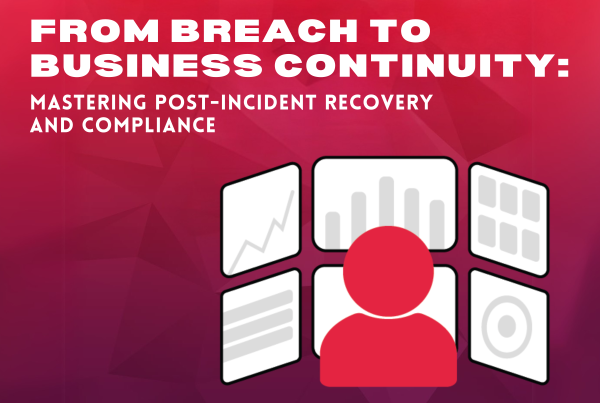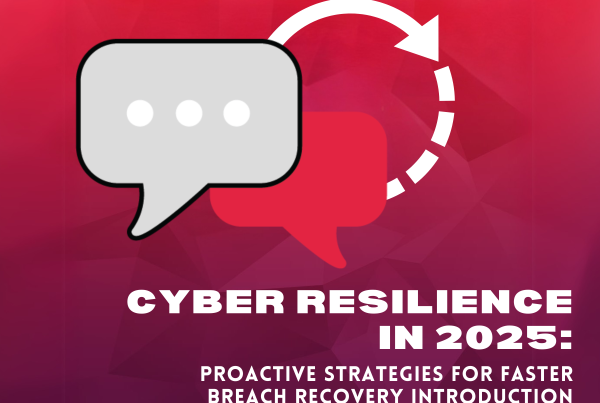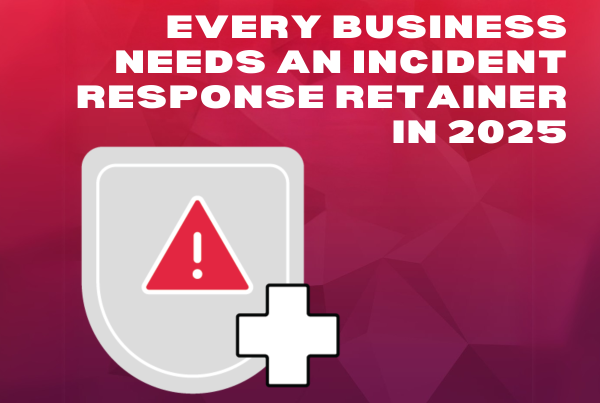Introduction
When a cyber attack strikes, time is critical. The first hour can determine whether your organization recovers quickly or faces serious operational and financial damage. IBM’s Cost of a Data Breach Report 2024 shows that the average cost of a breach is $4.45 million globally. Many businesses do not have a clear and actionable plan to respond fast enough.
This guide provides practical, step-by-step instructions to help businesses manage the first 60 minutes after a cyber attack. It draws on best practices from the National Institute of Standards and Technology (NIST) and the Cybersecurity and Infrastructure Security Agency (CISA). IPV Network delivers 24/7 incident response services to help organizations execute these steps effectively.
Step 1: Detect and Identify
Goal: Quickly recognize signs of an active cyber attack and determine its type and severity.
Detailed Indicators of a breach:
- Sudden, unexplained slowdowns in applications or network traffic spikes that do not match normal patterns
- Files being encrypted or locked, ransom notes appearing on user screens
- Unknown administrator or privileged accounts being created or granted elevated permissions
- Alerts or anomalies flagged by security monitoring systems, intrusion detection tools, or endpoint protection platforms
- Suspicious outbound data transfers to unfamiliar IP addresses or geographic regions
- Unexpected shutdowns or restarts of critical services
Expanded Action Plan:
- Examine system logs, endpoint alerts, and intrusion detection reports to confirm abnormal activity.
- Verify whether the issue is an actual cyber incident or a false alarm by cross-checking alerts across multiple monitoring sources.
- Immediately trigger internal security alerts and activate your pre-defined escalation path for cyber incidents.
- Notify your internal or contracted external incident response team and provide them with the collected evidence and a timeline of detected anomalies.
- Document all findings meticulously to guide containment and forensic analysis later.
Early and thorough detection helps prevent attackers from gaining deeper access, stealing sensitive information, or deploying additional malicious payloads.
Step 2: Contain the Threat
Goal: Stop the attack from spreading, limit damage to systems and data, and prevent attackers from gaining further access.
Detailed containment steps:
- Immediately disconnect compromised devices from wired and wireless networks. Use network segmentation to quarantine suspicious systems.
- Disable or reset any user or administrator accounts showing signs of compromise. Enforce strong password changes and multi-factor authentication if available.
- Update firewall and intrusion prevention systems to block malicious IP addresses, domains, and known attack signatures identified during detection.
- Apply endpoint protection or network access control to temporarily block vulnerable endpoints from communicating externally.
- Perform a rapid vulnerability scan on unaffected systems to ensure attackers have not moved laterally. Log all anomalies.
Communication and coordination:
- Establish a secure, dedicated communication channel for the incident response team to share updates without risking interception.
- Notify legal, compliance, and public relations teams early if there is a chance sensitive customer data or regulatory reporting requirements are involved.
- Document all containment actions, timestamps, and responsible team members to support forensic analysis and regulatory inquiries later.
Thorough containment reduces the risk of escalation and prepares the organization for full eradication and recovery steps.
Step 3: Engage Expert Responders
Goal: Obtain specialized support to effectively manage and neutralize the cyber attack through professional intervention.
Many organizations lack the depth of expertise or dedicated cybersecurity teams needed for major incidents. At this stage, quickly involving a trusted incident response provider like IPV Network is critical.
Expanded expert responder contributions:
- Conduct deep forensic investigations: capture volatile memory, analyze system images, identify the initial point of compromise, and trace attacker movements within the network.
- Lead and coordinate containment, eradication, and tactical countermeasures while ensuring continuity of critical business operations.
- Provide legal and compliance guidance to meet requirements under regulations such as GDPR, HIPAA, PCI DSS, and other regional mandates.
- Develop and initiate a structured, phased recovery plan, including validation of backup integrity and hardening of systems before they return online.
- Share intelligence and indicators of compromise with your security team to improve detection capabilities and strengthen defenses.
Organizations that have established a proactive incident response retainer with providers like IPV Network resolve breaches more efficiently, reducing average downtime and financial impact significantly compared to ad-hoc engagements.
Step 4: Preserve Evidence
Goal: Collect, document, and securely protect digital artifacts and forensic data needed to thoroughly investigate the attack, support compliance requirements, and enable potential legal action.
Expanded evidence handling steps:
- Capture and preserve system logs, event histories, volatile memory images, and complete network traffic data to trace attacker behavior and techniques used.
- Maintain detailed chain-of-custody documentation, recording who accessed each piece of evidence, when it was collected, and how it was transferred and stored. This ensures integrity and admissibility in court or regulatory reviews.
- Do not reboot, modify, or attempt to clean compromised systems until full forensic imaging is completed. Any alterations could destroy valuable evidence or hinder root-cause analysis.
- Use encrypted, access-controlled storage solutions to securely store all collected evidence. Include redundant secure backups to prevent accidental loss or tampering.
- Document every evidence preservation action in real time. Include screenshots, timestamps, and metadata from affected endpoints and servers.
- If external investigators or law enforcement are involved, coordinate securely to hand over evidence while retaining copies for internal review.
Properly preserved evidence gives investigators the ability to reconstruct attack timelines, understand exploited vulnerabilities, calculate data exposure, and strengthen defenses to prevent future breaches.
Step 5: Begin Recovery
Goal: Methodically restore safe business operations, verify the environment is clean, and strengthen systems to prevent attackers from regaining access.
Expanded recovery actions:
- Validate backup integrity by performing thorough malware scans and checksum verification before initiating restoration. Ensure backups have not been tampered with or infected.
- Restore critical business systems incrementally, starting with the most essential services, while keeping other systems isolated until verified secure.
- Apply all necessary security patches and configuration hardening measures to systems that were exploited during the attack. Rebuild compromised servers from trusted, clean images rather than reusing compromised environments.
- Monitor network traffic and system behavior closely during reconnection. Utilize continuous logging and real-time alerts to detect any remaining indicators of compromise.
- Document every recovery step with detailed timestamps, personnel involved, and technical actions taken for post-incident reports, regulatory compliance, and insurance claims.
- Engage cybersecurity experts to conduct a post-restoration review and vulnerability assessment to confirm no persistence mechanisms or hidden malware remain.
Recovery lays the groundwork for long-term improvements such as redesigning security policies, conducting staff retraining, improving network segmentation, and implementing stronger access controls to increase resilience against future cyber threats.
Conclusion
The first 60 minutes of a cyber attack are critical. Detecting threats early, containing their spread, engaging expert responders, preserving evidence, and carefully beginning recovery will minimize financial and reputational damage.
IPV Network provides certified 24/7 incident response services designed to help organizations respond quickly and effectively to cyber emergencies. Book a free cybersecurity posture or compromise assessment with IPV Network today to ensure your business is prepared for future threats.
References:


